
Amazon released the first generation of Echo Smart Speakers in 2015 as a hybrid of integrated speakers and Alexa carriers, and Echo later added a number of new series of products. At the same time, in 2017, Amazon released a new generation of Echo Plus as an upgraded version of the original product.
Amazon is not currently the only tech giant interested in smart speakers. Although it is the first company, there have been many competitors. Google launched Google Home, and in October this year just added two new products, Google Home Mini and Max. Apple released the HomePod smart speaker in March of this year, and was officially launched in December.
So who is better for you in the carrier battle of Alexa, Google Assistant, and Siri's three intelligent voice assistants? Let’s take a look.
design
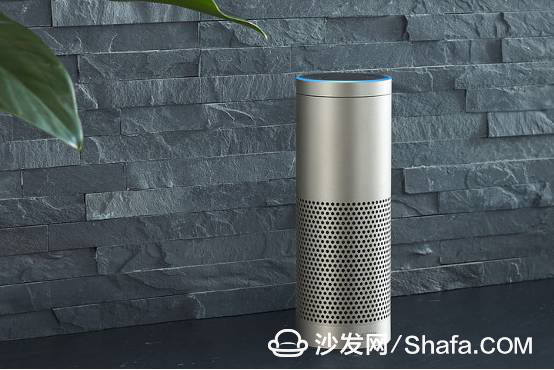
Amazon Echo is a long bar with a black or white version, but most people will choose black. After all, black can adapt to various styles, while the white Echo is more in line with modern decoration style. Echo's design is simple and low-key, and it can be integrated with the environment on any desktop.
Echo has a special disc on the top to adjust the volume. When you don't want to talk or do not want Echo to work, you can press the mute button; if you don't want to wake Alexa's name or use voice commands to activate, you can also choose to press another button to activate manually.
Echo looks simple, but there isn’t much to recommend. Echo naturally integrates into our lives. From this perspective, this design is also great.
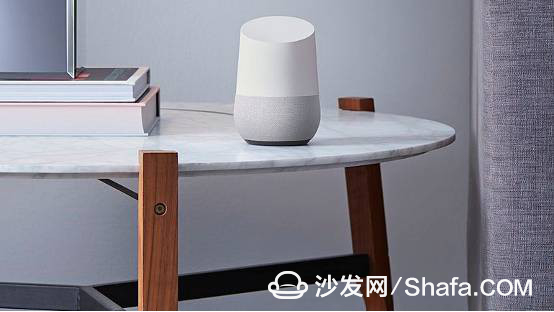
Many media's appearance evaluation of Google Home, said that looks like an air humidifier, this description is indeed very appropriate. This description is not a bad thing. Intelligent speaker This product, placed in the home is to integrate with the home environment, and integrate as seamlessly as possible with our lives. The top half of Google Home is unified to white, but the bottom half can be customized according to your needs. Google offers many different options for the lower half of Google Home, ranging from gray fabric bases to a variety of colors and materials, and costs an additional $20 to $40.
Google Home has only one physical button. When you don't want to listen to it or want to be quiet, this button is the mute button. In addition, most of Google Home's features are controlled by voice commands. In addition, the top touch capacitive panel can be used to adjust the volume, pause, and stop the sound.
Google Home has red, green, blue, and yellow lights on top. When we make a voice command, the four lights also glow and rotate, and there are also very interesting animations. The cables underneath Google Home are neat and long and can be placed in different locations in the home and don’t look out of place.
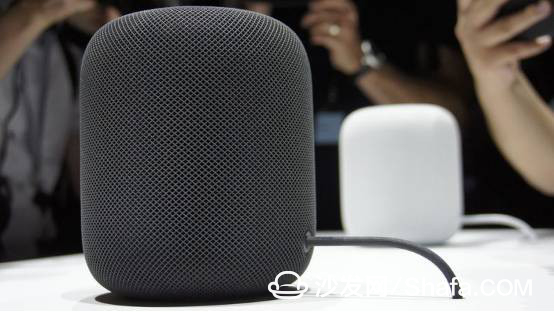
The Apple HomePod looks very cute, like two grapefruit stacked together, chunky and chunky. The HomePod has 7 tweeters and a subwoofer on the bottom and 6 microphones on the top. This can guarantee its sound effects and accurate speech recognition rate.
Music and entertainment
Both Google Home and Echo can connect to mainstream online streaming music services such as Spotify or Pandora after logging into their accounts, while HomePod is based on their own Apple Musci. However, Google Home also allows you to sync all sorts of apps and Chrome tags through Google's Pocket Cast feature, which is obviously another advantage of Google Home.

The volume of the three smart speakers is full, with a wrap-around speaker design, while Google Home uses a front drive with a passive diffusion unit on the side.
Compared to Echo, the design of Google Home is better in the bass effect, and Echo will be able to play a better effect in the center of the area. Google Home is more suitable to be placed in a corner of the home. If you want to make the entire room full of music, you can connect multiple Google Homes to one audio source and gradually increase the audio effect.
HomePod can quickly fill the room with sound, and starting from the bass, the sound of the various areas is very full, has a bit of Amazon Echo and Google Home dwarfed. Although the HomePod is not equipped with a separate subwoofer, the actual effect has far exceeded our requirements for this size of wireless speakers.
With Google Home, we can use sound and Chromecast to control the video on TV, which is very useful for those who just sit in front of the TV, do not have a smartphone in their hands, and just want to quickly change channels. Chromecast now supports YouTube, Netflix, HBO Now, Hulu, and more. Amazon Fire TV is Google Chromecast's main competitor, and has not yet provided integration capabilities. If you choose Amazon, you can't quickly jump to the Favorites menu.
Of course, if you have a Logitech Harmony universal remote control, all problems are solved. It can connect to Echo remotely, turn on the TV directly, jump to different services, and even allow us to jump through different channels and services quickly by setting keywords.
HomePod can calculate the shape of the aspect through the feedback collection of the sound by the microphone, and then break down the different components of the song into different regions. So when the ambient sound is reflected from the wall, the sound will be gathered directly into the center of the room.
HomePod, Google Home, and Echo have many interesting uses, such as can be used to play some puzzle games. However, Echo's games are built on different "skills", and this is not necessarily a bad thing, so that we can experience more different types of games. And just search the various methods provided by Amazon, you can choose the game you want. Google Home's games are fun, but the number is relatively small, compared to Echo's hundreds of games.
All three products can be used for jokes and singing, but they are just for entertainment. Obviously, Amazon and Google engineers have spent a lot of time to complete the response in various situations. If you study it carefully enough, you will find many interesting applications. For example, Google Home and Echo will sing birthday songs for you, and Google Home's melody will be more standard.
Personal assistant
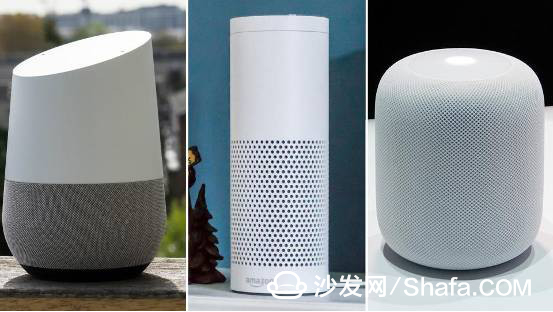
If you want to perform more realistic tests on the two products, Google Home and Echo have many similar features. They can tell you where the nearest store is, and Google can directly call its own map service and tell you an estimated time to drive, and Echo will only tell you how far away it is. They all report the weather forecast, but it seems that the source of the data is different. Sometimes in the test, there will be some differences in the weather forecast data of the unified location.
Google Home and Echo will tell you news sources from different sources, and both provide default NPR newsletters. At the same time, you can also ask them about the results of the sports competition, and you can also get more introductions from Wikipedia. Google Home understands contextual contexts, such as asking the age of actors or athletes, or trying to figure out when to start a game and when to release a movie. Of course, we need to say OK between each question, which is a bit more troublesome than using Alexa. In any case, it is really annoying to repeat a word for a period of time. We hope that Google or Amazon will improve this issue in the future.
Having such a personal assistant at home has the greatest advantage of being able to control smart home products represented by smart light bulbs. Both assistants support the control of smart light bulbs such as the Philips Hue and LIFX and can be controlled with sound. After the rooms are set up, we can group the controls according to their names so that after returning home, we can control them with commands such as kitchen, bedroom or all lights. Both Echo and Google Home work perfectly with these smart light bulbs and respond to them.
Google Home can connect to some of Google’s own services, such as Google Calendar, and can set events directly under a Google account, then mark a time and place to schedule. However, this feature only supports Google Calendar, and Amazon Echo access is Microsoft's Outlook service. However, when it comes to some simple tasks, Google is still a little inferior, although Google can also complete the task, but Google Home has some tasks can not be completed, such as adding reminders and creating to-do events.
Both assistants can create timers, which will play a big role in cooking in the kitchen. Both voice assistants can help us to know a lot of different menus. In contrast, Google Home is more intimate in the cooking process. If you accidentally missed a step, you can directly ask "What is the previous step?" Then you will go back to the previous steps and come back again. In addition, we can also view more than 5 million different recipes via smart phones and send them to smart assistants to tell us.
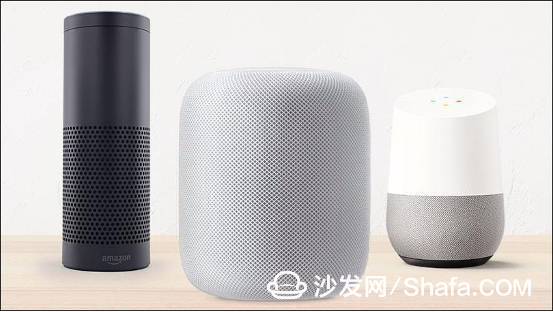
Google Home also added an interesting feature that is to support multiple users. For example, we can train Google Home based on the voices of different family members so that when users with different voices ask the same question, the answer is different. For example, different members of the work route and planning can be automatically identified based on different voices. There is still a lot of potential for this kind of multi-user automatic identification. We are sure that Google will make it more useful in the future.
For Amazon Echo, there is another natural advantage is the binding with the Amazon account. In this way, we can place orders directly online through voice commands, so if you want to order a pizza, you can place an order by saying the keyword. This is a very convenient feature for fanatic online shoppers. In addition, Amazon will often launch a variety of different promotional activities, which is also very convenient for Echo users.
In our test of voice command response speed between the two, Google Home won 10 times in 15 tests with an average response time of 1.56 seconds, while Echo's average response time was 1.66 seconds. Although it seems that the gap is not obvious, so do not be too tangled up with the problem. Our ears basically cannot identify this difference.
Since HomePod is not currently on the market, its voice command experience is basically similar to that of the iPad Pro and iPhone platform Siri.
to sum up
If you want to say that HomePod, Echo, and Google Home are even better, frankly, it depends on your needs and uses. The three smart speakers all have their own advantages and disadvantages, but at present Amazon Echo is still a more popular product, and it is also more compatible with smart homes.
Nevertheless, which personal assistant you choose will ultimately depend on you. Obviously, in the past year, Google has greatly improved its performance, and Amazon has placed its bets on third-party developers and used the power of others to achieve more functions. With free phone calls, Chromecast support, if you are already a Google ecosystem user, then obviously you have to choose Google Home. Echo is more suitable for independent new users. As for HomePod, it is a sound-based, intelligent-assisted product. If you value audio more, then HomePod is the best choice.
Smart TV/box information can focus on smart TV information network sofa butler (http://), China's influential TV box and smart TV website, providing information, communication, etc. on TV boxes, smart TVs, smart TV software, etc. Answer questions!Hydraulic High Pressure Sensor
Hydraulic High Pressure Sensor,Thin Film Pressure Sensor,Vacuum Transducer,Brake Fluid Pressure Sensor
Shenzhen Ever-smart Sensor Technology Co., LTD , https://www.fluhandy.com
